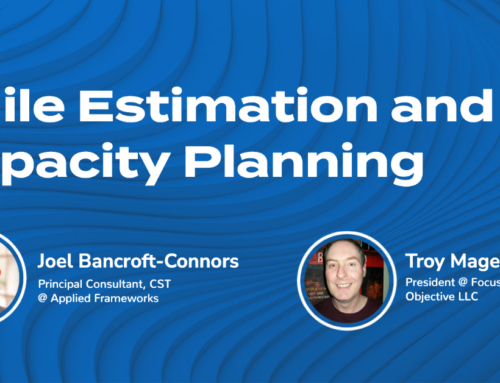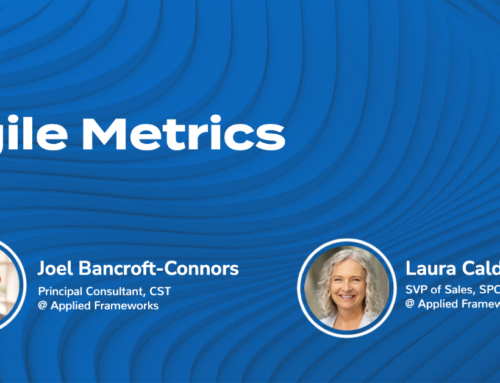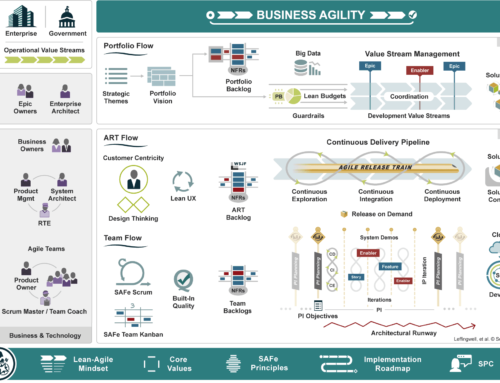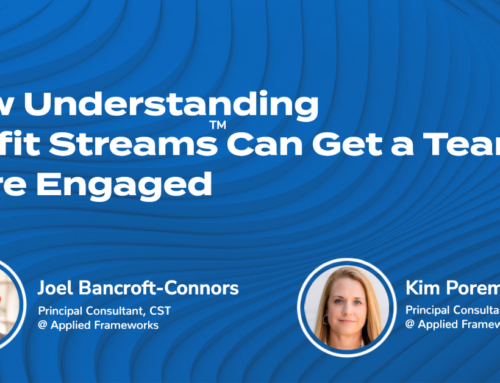9 Tips for Choosing a Certified Scrum Trainer
Though many aspects of the Scrum framework are uniform, Certified Scrum Training is not an “off the shelf” commodity. Trainers can vary dramatically in experience and approach, so you should think carefully about how you choose — and what you want to get out of it.
We’ve learned a few lessons after teaching hundreds of training sessions over the last 10 years, so we’ve developed nine common-sense guidelines for selecting an in house trainer — most of which are equally applicable in a public training class.
1) Every trainer and course is unique
A great training is a combination of education, skill-building, and let’s face it – entertainment. How your instructor shows up, commands the classroom, tells stories, and manages the learning environment is unique to that individual. Not every trainer is a “fit” for every environment. Do your homework and interview the actual trainer to explore and determine how the style, content, and presence of the trainer will fit for your group; be wary of organizations and outfits who do not give you access to the actual instructor; speak with the instructor to explore the fit.
2) Preparing you to ace the exam had better be part of the show
You’re in the class to up your game and command a credential that positions you above others in the marketplace and inside the organization. But the Certified Scrum Master exam was upgraded in 2019 and is now more challenging than ever. Your instructor should be able to tell you their student pass-rate — and how they’ll prepare you. Ask your instructor how their content and course prepares you to pass the exam.
3) How learning outcomes are achieved can vary widely
You’re not just in the CSM to pass a test and get a piece of paper; you’re investing in yourself to gain skills, increase understanding and become a badass scrum master. The Scrum Alliance has 48 learning outcomes, each of which has a bearing on the value you derive from the class. Your instructor should be able to address how a given outcome is achieved. Peruse the outcomes and determine which matter most to you. Approach your instructor with a question or two regarding how they teach that outcome. You might be surprised by the results.
4) No, the Certified Scrum Master is NOT “out-of-the-box”
Yes, the Scrum Alliance has a set of learning outcomes that the CSM is designed to deliver on. However, the way and depth to which topics are covered should take into account your organization’s needs and journey of agile adoption. Ask your instructor how they will customize the sessions for you. A good instructor will demand a discovery session with you to understand your need and determine which topics can be condensed and which can be expanded to meet the needs of your learners (all while ensuring the appropriate content is covered to pass the exam, of course!).
5) Yes, adult learners are special…. And should be treated as such
Neuroscience and adult learning theory has advanced tremendously in the last 10 years and those advances have influenced and affected the way that top learners teach. If your instructor is not leveraging the latest brain science and bringing that to the way that teaching the topics is conducted, then you are getting short-changed. Ask your instructor if they are leveraging the latest in adult learning and neuroscience. And if so, how are they doing it?
6) Great trainers have lived what they are teaching
“Teach nothing you have not experienced” the saying goes. The most effective trainers bring their war stories and experience in the room to enhance your learning and make it stick. Many have written books about their experiences. Ask your trainer what their real-world experience is, what roles they held, for how long, and what they learned in those positions. It matters.
7) Know what learning looks like BEFORE you buy the class
Ask the trainer what learning looks like. Is it powerpoint slides? Is the class sitting looking at the instructor? Is the class on its feet, moving, interacting, and relating to the material dynamically. This is a vital aspect of choosing the “best fit” class and instructor. Watch a video of the instructor in action. Do you like what you see? Ask to see a video of the instructor who is being offered to your group. Demand it!
8) You get what you pay for
Certified trainers are the cream of the crop; check the public pricing and how that translates to the private class. You are asking your best people to invest 2 full days away from their work; make sure the time they spend is optimized for their learning needs and practical tools they can bring back and use on the job right away.
9) What comes after the class?
OK, so the class was great, but what sort of post-class continuing education plan is there for your staff? CSM is the start of the journey for most participants. Ask the trainer what they provide for progression to the next level of Certified Scrum Professional. Do they provide a basic set of workshops or advanced, on-demand, online application courses combining learning by doing with detailed instructor feedback?
Need a Fresh Start for your In-House Agile Training?
Applied Frameworks offers customized certification pathways for ScrumMasters and Product Owners. We can also offer structured training that doesn’t lead to certification but will get your teams ready for Agile transformation. To learn more, please call the number below or make an inquiry about Custom Workshops.






